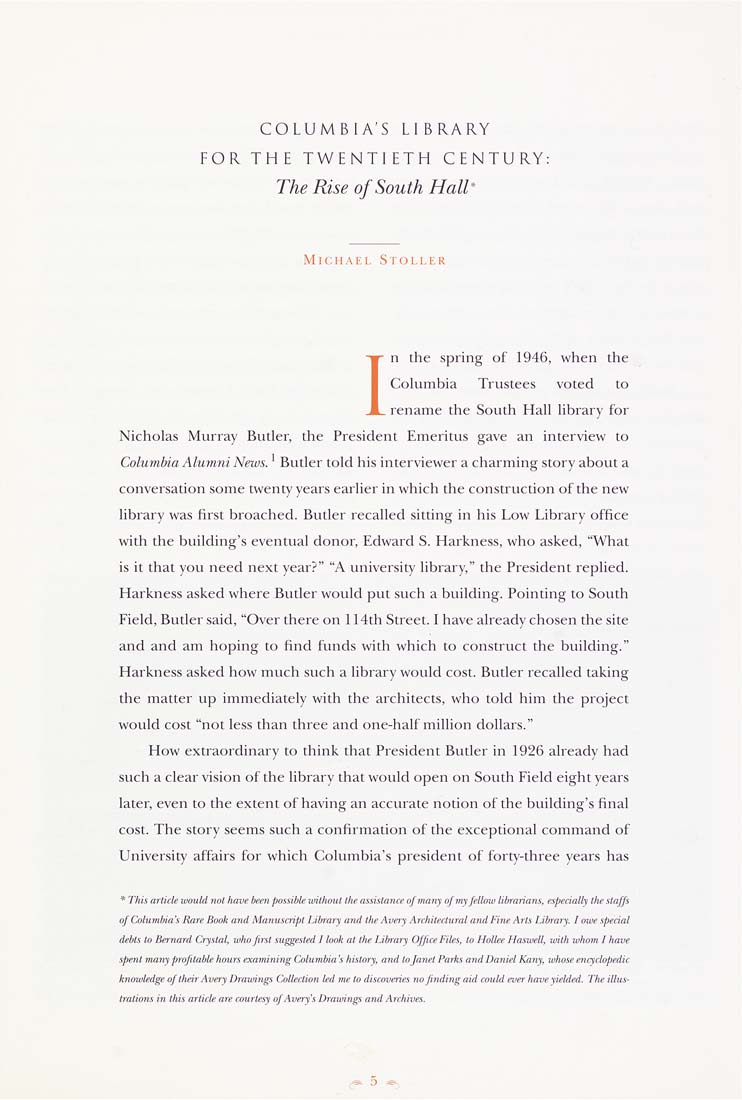Columbia Library columns (v.45(1996))
(New York : Friends of the Columbia Libraries. )
|
||
|
|
|
|
| v.45,no.2(1996:Autumn): Page 5 |

COLUMBIA'S LI BRARY FOR THE TWENTIETH CENTURY: The Rise of South Hall' MiCHAET StoTTER Ii ■ n the spring of 1946, when the Columbia Trustees voted to . rename the South Hall library for Nicholas Mtirray Butler, the President Emeritus gave an interview to Columbia Alumni News. Butler told his interviewer a charming story about a conversation some twenty years earlier in which the construction of the new library was first broached. Butler recalled sitting in his Low Library office with the building's eventual donor, Edward S. Harkness, who asked, "What is it that you need next year?" "A university library," the President replied. Harkness asked where Butler would put such a building. Pointing to South Field, Butler said, "Over there on IHth Street. I have already chosen the site and and am hoping to find funds with which to construct the building." Harkness asked how much such a library would cost. Butler recalled taking the matter up immediately with the architects, who told him the project would cost "not less than three and one-half million dollars." How extraordinary to think that President Butler in 1926 already had such a clear vision of the library that would open on South Field eight years later, even to the extent of having an accurate notion of the building's final cost. The story seems such a confirmation of the exceptional command of University affairs for which Columbia's president of forty-three years has * This article would not liave been possible vdlhoul ttie assistance of many of my fellow librarians, especially the staffs of Columbia's Rare Book and Manuscript Liln-ary and the Avery Architectural and Fine Arts LH>rary. I owe special debfi lo Bernard Crystal, who first suggested I look at the Library OfficeFiles, to Holtee Haswell, with whom I have spent many profitable hours examining Columbia's history, and to Janet Parlts and Daniel Kany, whose encyclopedic knowledge of their Avery Drawings Collection led me to discoveries no finding aid could ever have yielded. The illus¬ trations in this article are courtesy of Avery's Drawing and Archives. |
| v.45,no.2(1996:Autumn): Page 5 |







